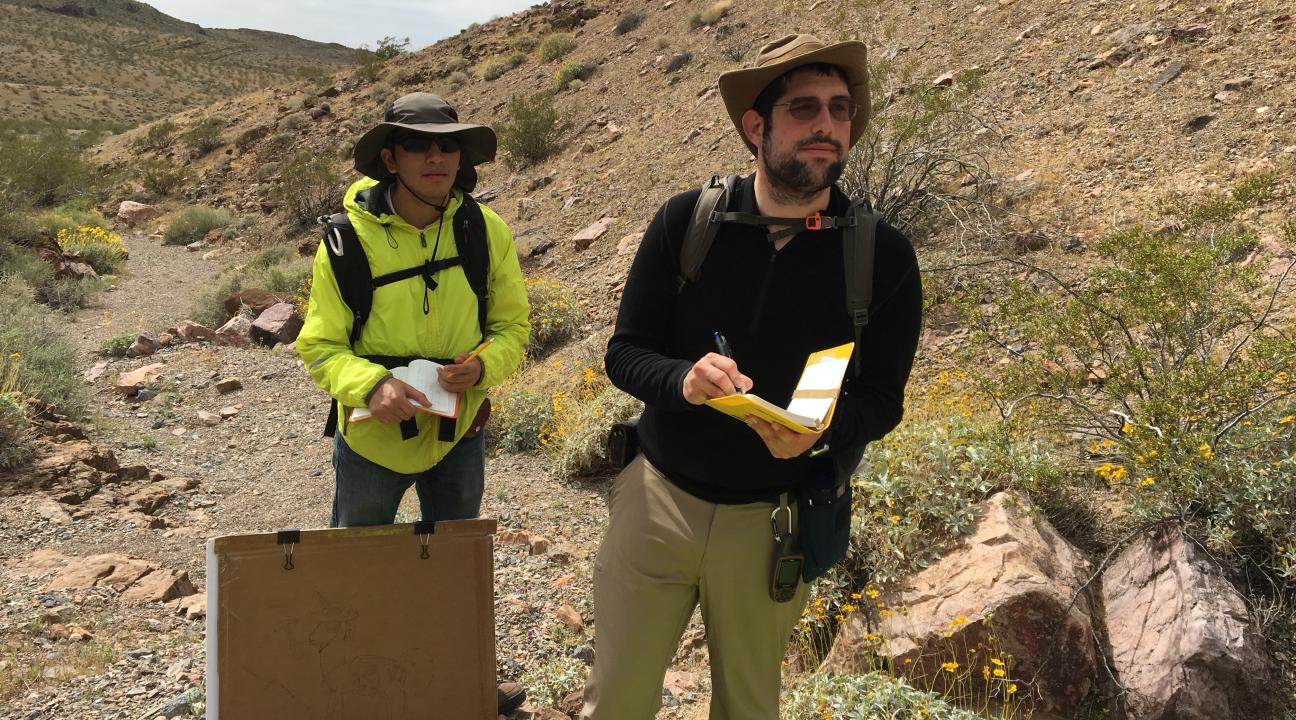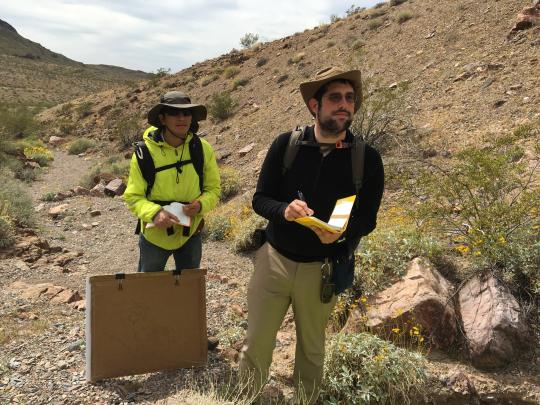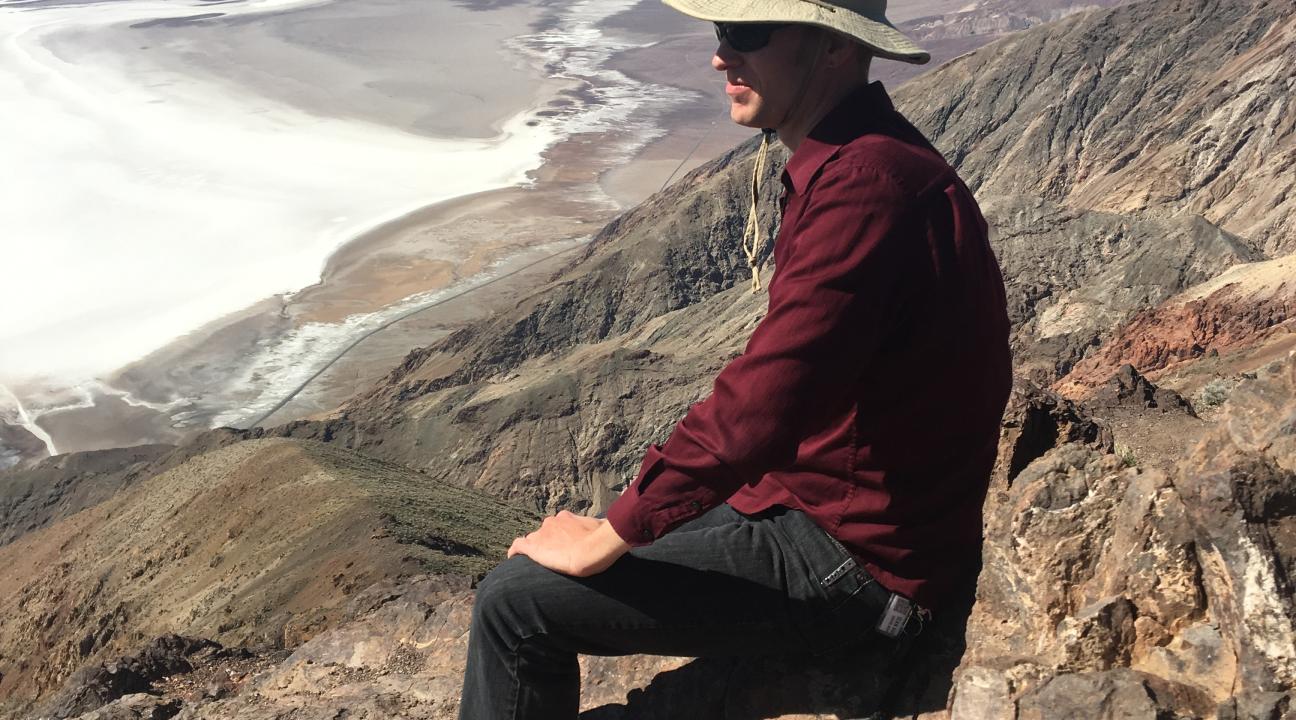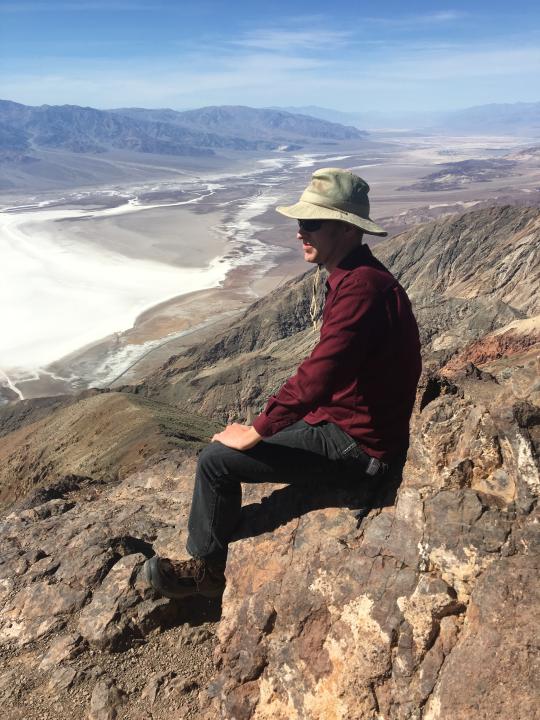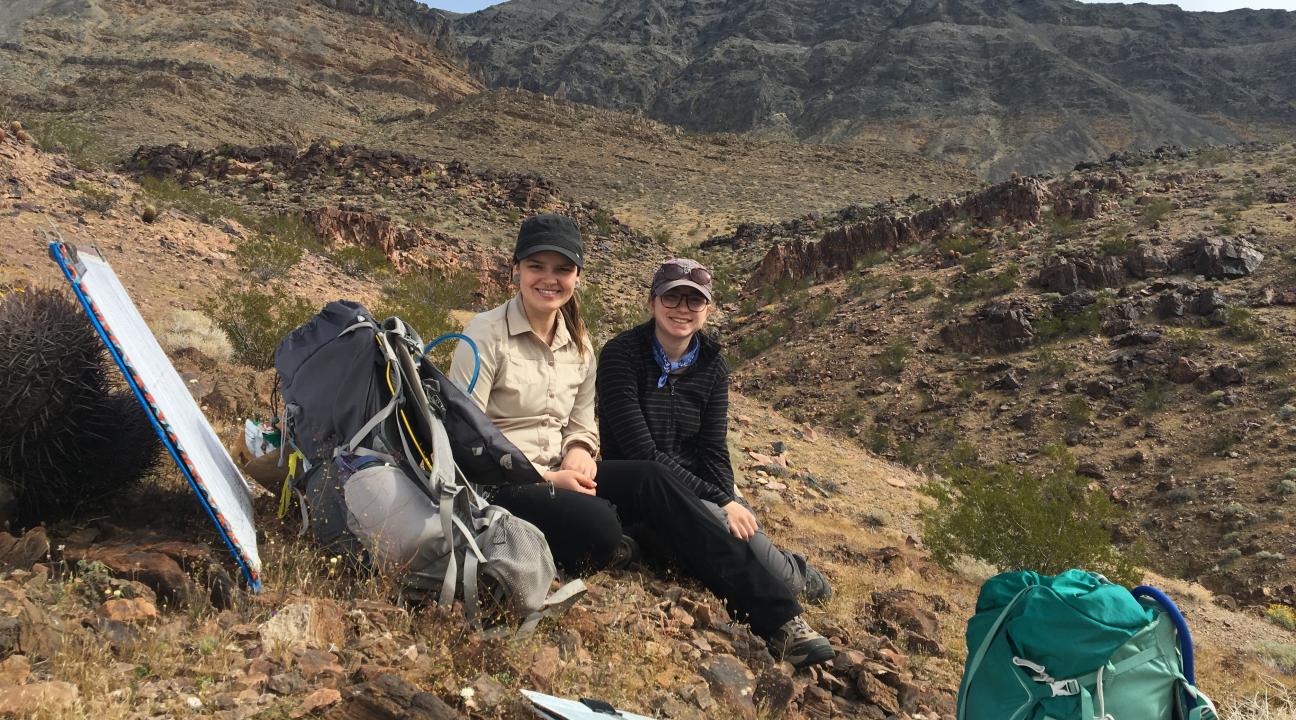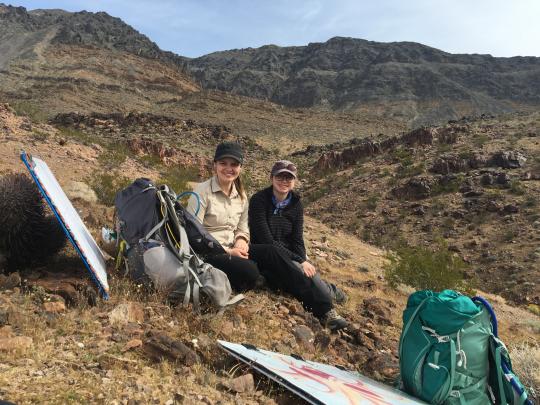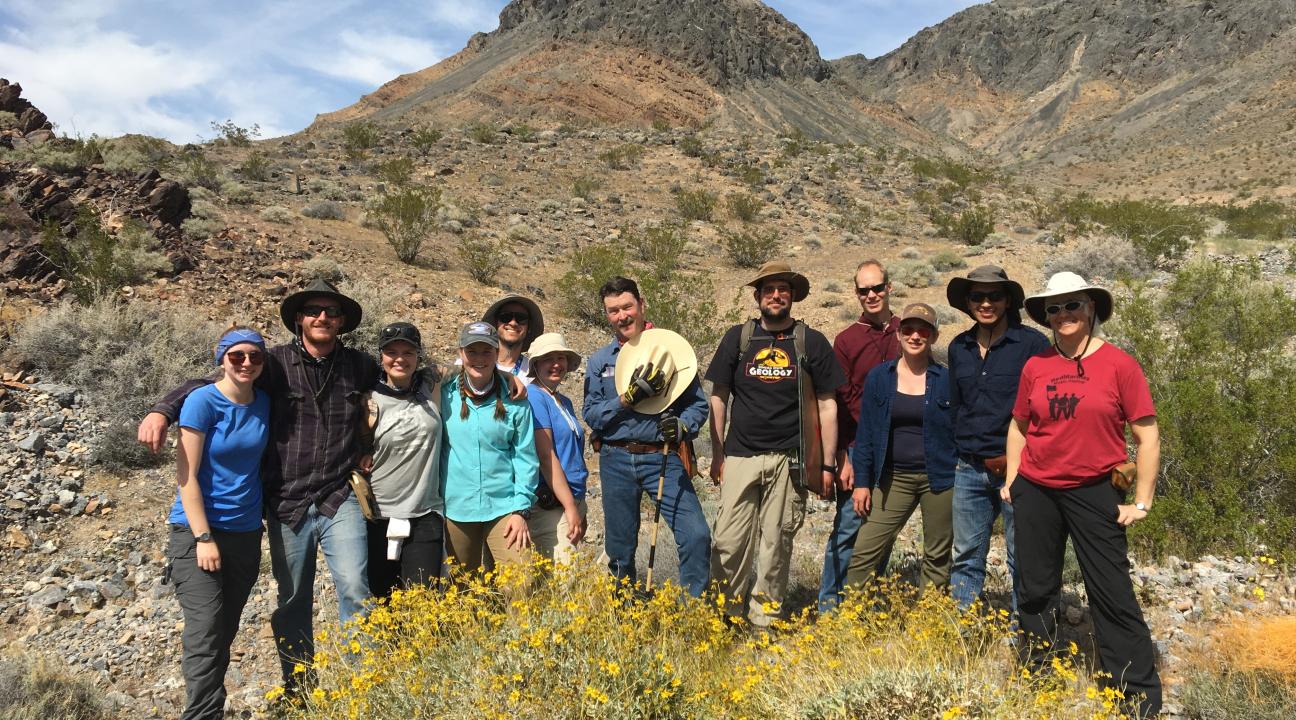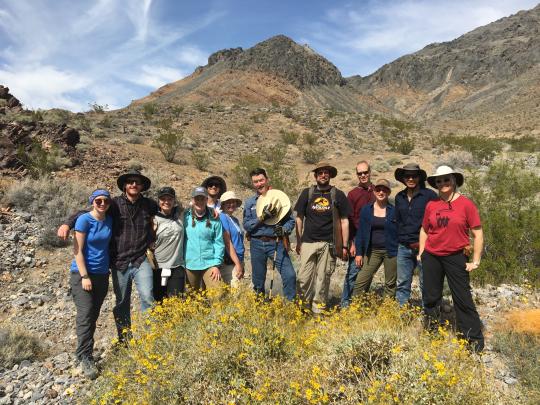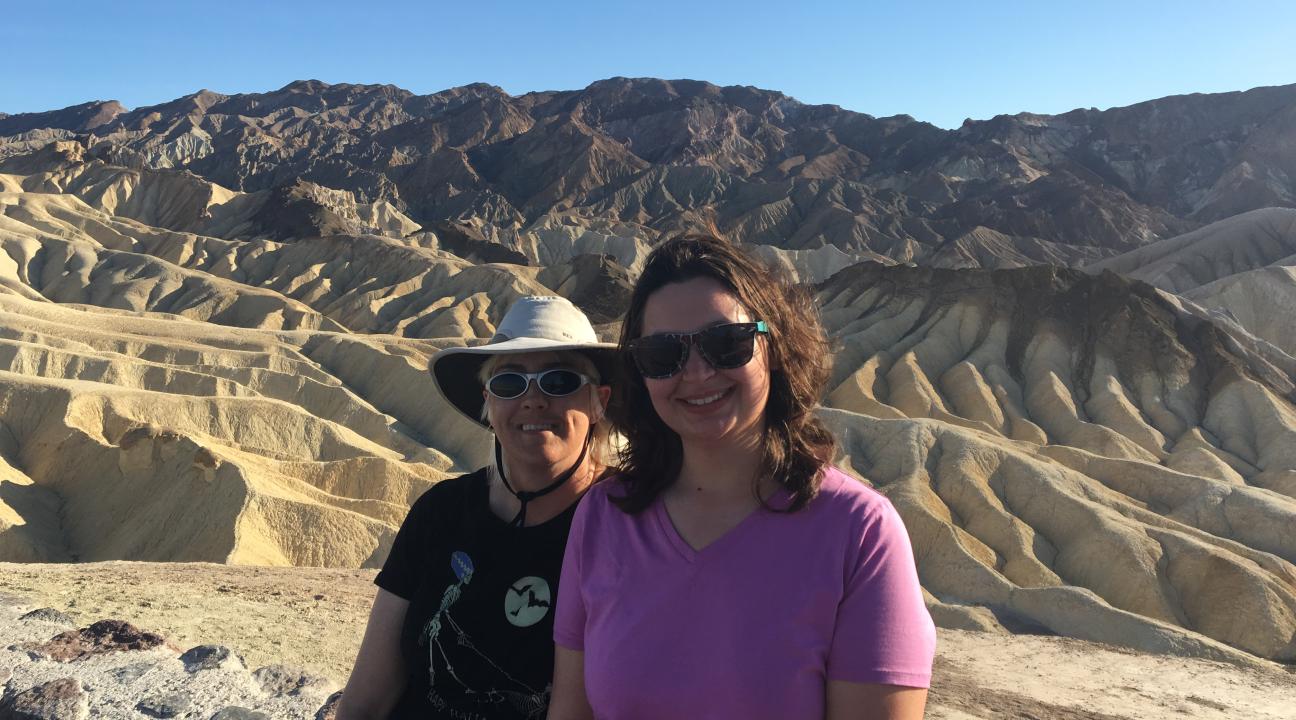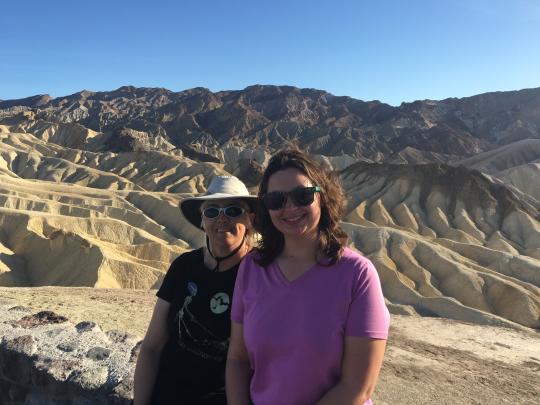GEOL 420: Integrated Field Experience (Senior Field)
Senior field includes a 10 day field trip, traditionally run in the greater Death Valley area.
Spring Break in Death Valley with the Sonoma State Department of Geology
By Philip Mooney
Hot desert sun beats down on a barrel cactus nestled in a crack between pink-hued slabs of rock. The rock, a glistening quartzite, snakes its way down the barren and boulder-strewn hillside as a lizard scampers towards the welcome shade cast by the cactus, it’s head flitting back and forth as it scans the isolated surroundings. The air is still and the landscape eerily quiet, the only noise the distant whine of a car making its way through Emigrant Pass. The road traces the historic Old Spanish Trail, a route used in the 1800’s by pack horses and herders as they crossed the desert on their way from New Mexico to California. Time seems to pass more slowly out here in the Mojave, and the landscape appears eternal and unchanging.
“Hey Anthony!” A deep bellow pierces the peaceful scene as a sun-worn field hat appears over the nearby ridge. “What’s the orientation of the Zabriskie where you’re standing? I’m dipping 42 degrees here.” The voice is that of Dan Martin, a senior geology major at Sonoma State. “Right here it’s at 36, and the strike is a bit further to the north. I think we may have crossed a fault.” The response comes from Anthony Gamboa, another classmate in the geology department at SSU. “That’s just what I thought guys, it’s another high angle normal fault. That explains the rotated block behind you,” responds Kaitlyn Fleming, a senior geology major at SSU and final member of the 3-person mapping group.
The students are out in the desert doing geologic mapping as part of a week-long field geology course, Integrative Field Experiences, and they’re discussing the orientation of a particular sedimentary rock unit to understand and unravel the geologic history of the area. Although the landscape may at first appear eternal and unchanging, the students are learning first hand that it’s anything but. The rocks have been buried, tilted, faulted, folded, and deformed in the 500 million plus years since they were deposited in a continental shelf environment in the Cambrian. It’s the task of the 14 students in the class to identify the various rock units, observe the complex angular relations between them, record the orientation and structural trends within the units, and create a finished geologic map during their 8 days of field work. Back in the classroom, they’ll use their observations and data to write a report to summarize the geologic history of the area throughout the rest of the semester.
The class was brought down to the Death Valley area by David Bero and Phil Mooney of the Department of Geology as part of GEOL 420: Integrative Field Experiences, a course often referred to by those in the department as “Senior Field”. While many of their contemporaries are enjoying their Spring Break in exotic locales, these students spend their week in the desert honing their ability to make valid geologic field interpretations through detailed field mapping and report writing. Senior Field is the capstone course of the geology major, and presents the students with the opportunity to demonstrate the skills they’ve acquired through their core courses.
Students spend their week at the SHEAR Center (Shoshone Education and Research Center) in Shoshone, CA, a cooperative research station that facilitates field trips and research in the Death Valley region. They’re up for breakfast and to pack their lunch at 6am each morning and out in the field by 8:30am. After a full day of geologic mapping, scrambling off trail up and down the mountains to walk the contacts and observe the outcrops, they’re back at 6 pm to eat, put their feet up, and get ready for the next day of mapping. The trip is strenuous both physically and mentally, but students always leave the field with greatly improved skills and much more confident of themselves as geologists.
Staying in the geologic wonderland of the Death Valley area, they’re also able to squeeze in a little entertaining geo-tourism into the trip. Students take a rest day from the field in the middle of the week and head into Death Valley National Park to view some of the incredible geology on display on a massive scale. The combination of unique geology and perfect exposure of the rocks due to the lack of vegetation makes Death Valley a wonderful place to take in the sights and do some geologic arm waving. Students see the unique “turtlebacks” and walk the lowest point (282 feet below sea level) in the continental US in Badwater, view the evaporates at the Devil’s Golf Course, explore the ancient deformed lake bed deposits at Zabriskie Point, and take in the massive scale of the valley at Dante’s View.
Integrative Field Experiences is a highlight, perhaps the highlight, of an education in Geology at Sonoma State University. The amount of field training our graduates receive is equal to or greater than any other educational institution in the United States. This really sets our department apart, cements our reputation at the national level, and leaves our graduates prepared for successful careers after graduating.



